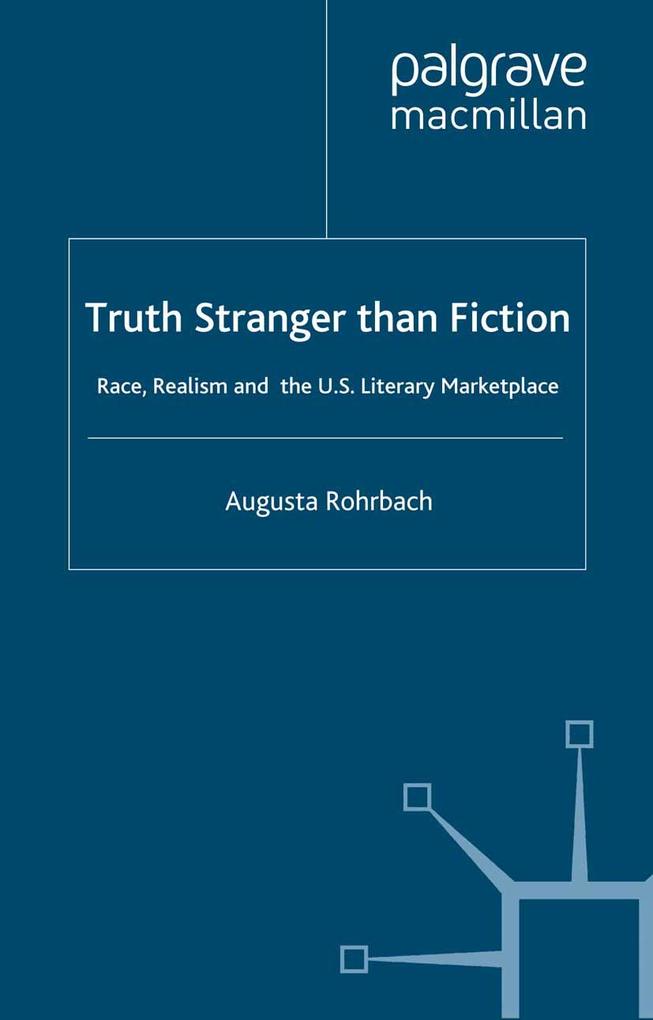
Sofort lieferbar (Download)
Using the lens of business history to contextualize the development of an American literary tradition, Truth Stranger than Fiction shows how African American literature and culture greatly influenced the development of realism, which remains one of the most significant genres of writing in the United States. More specifically, Truth Stranger than Fiction traces the influences of generic conventions popularized in slave narratives - such as the use of authenticating details, as well as dialect, and a frank treatment of the human body - in later realist writings. As it unfolds, Truth Stranger than Fiction poses and explores a set of questions about the shifting relationship between literature and culture in the United States from 1830-1930 by focusing on the evolving trend of literary realism. Beginning with the question, 'How might slave narratives - heralded as the first indigenous literature by Theodore Parker - have influenced the development of American Literature?' the book develops connections between an emerging literary marketplace, the rise of the professional writer, and literary realism.
Inhaltsverzeichnis
Introduction: From Sentiment to Sentience Truth Stranger and Stronger than Fiction: Re-examining William Lloyd Garrison's Liberator Making it Real: The Impact of Slave Narratives on the Literary Marketplace The Strange Disappearance of Rose Terry Cooke and the Eclipse of American Realism William Dean Howells Without his Moustache To Be Continued: Double Identity, Multiplicity, and Antigenealogy as Narrative Strategies in Pauline Hopkins' Magazine Fiction The Manner of the Marketplace: Edith Wharton as a Race Writer Keeping it Real: James Weldon Johnson and the Literary Marketplace
Produktdetails
Erscheinungsdatum
22. Februar 2002
Sprache
englisch
Auflage
2002
Seitenanzahl
153
Dateigröße
15,83 MB
Autor/Autorin
Augusta Rohrbach
Verlag/Hersteller
Kopierschutz
mit Wasserzeichen versehen
Produktart
EBOOK
Dateiformat
PDF
ISBN
9780230107267
Entdecken Sie mehr
Pressestimmen
Truth Stranger than Fiction is the first book to explore the direct relationship between slave narratives and realism in American fiction. It is a ground-breaking study, essential to the understanding of the history of American fictional realism, and should be read by all students and scholars of American literature. - Henry Louis Gates, Jr., Harvard University
Bewertungen
0 Bewertungen
Es wurden noch keine Bewertungen abgegeben. Schreiben Sie die erste Bewertung zu "Truth Stranger Than Fiction" und helfen Sie damit anderen bei der Kaufentscheidung.









